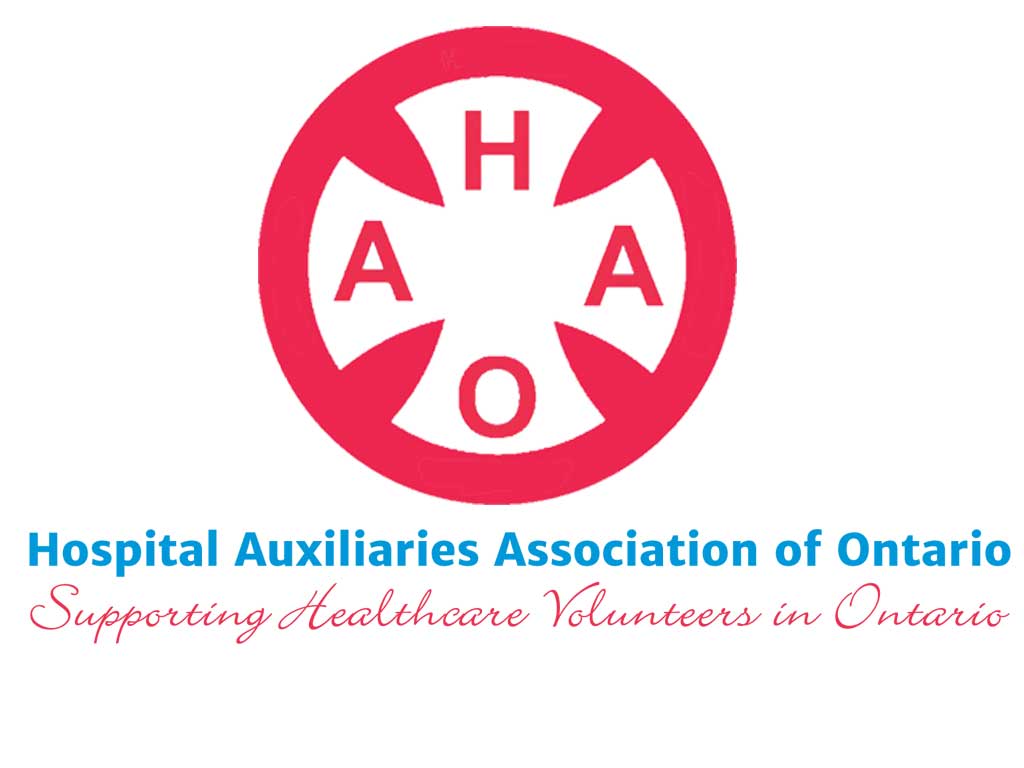ONTARIO—The Hospital Auxiliaries Association of Ontario (HAAO) has voted to disband, leaving individual hospital auxiliaries and regional groups to determine the future of their organizations.
“It’s been hard to come to this decision, both as a board and as an individual,” said current HAAO President Dorothy Friske. “Did I want to be the president to be in that position? No, but somebody had to be. It was inevitable.”
The HAAO, founded in 1910, has decided to disband because of cost concerns and changing membership. Every year, the group hosted an annual general meeting that overlapped with the Ontario Hospital Association (OHA)’s annual conference. This helped to offset some of the costs but they still proved to be a challenge.
“It’s unfortunate. It is because it’s an umbrella organization for us. But there were less and less members attending the AGM and they didn’t get any big new sponsorships for next year,” said Judy Mackenzie, president of the Mindemoya Hospital Auxiliary.
The rising costs occurred in the context of declining auxiliary memberships. Individual auxiliaries contribute funds to the association based on the number of hospital beds they serve, but several smaller hospitals in the province have shut down or amalgamated with others to increase their own efficiency.
According to a report from the Kingston General Hospital Auxiliary, the number of HAAO member hospitals decreased from a high of 125 to last year’s figure of 104. The interest in continuing to serve on the HAAO executive board had also dwindled; the report stated only one person expressed interest in serving on the board after this year.
The above reasons caused the HAAO to notify its members in August 2018 of its imminent disbanding at the end of the year. With the provincial-level organization’s dissolution coming into effect on January 1, 2019, auxiliaries now have to determine their own futures.
“This has been an organization that’s been around for 108 years, and so in our lifetime it’s always been there. It’s going to be something I’ll certainly miss,” said Ms. Friske. She has been involved with the Geraldton District for 45 years, where she currently serves as secretary in addition to her HAAO presidency.
“Whether people choose to stay together in a region as a group, it would be nice if they would because then you would still have the networking, camaraderie and social aspect of getting together,” she said.
The two auxiliaries on Manitoulin Island—the MHC Auxiliary and the Mindemoya Hospital Auxiliary—were grouped as part of the North Central region, a subdivision of the HAAO that had an effective area from Wawa to North Bay and New Liskeard to Parry Sound. The regional body has been exploring the idea of remaining together as a self-contained auxiliary unit and, while no final decisions have been made yet, many of the individual auxiliaries seemed to be in favour of this idea.
“The feeling I’ve had from the auxiliary presidents, most of them want to continue having a region. It gives them some sort of group to look up to. But that’s just the feeling, it’s not official,” said current HAAO North Central Region Chair Bea Jensen, who lives in Blind River.
“We still want to continue because our job doesn’t change. Our auxiliary responsibilities that we’ve been doing forever does not change just because the HAAO is disbanding,” she said.
Hospital auxiliaries are essentially formal volunteer groups that work to support hospitals through fundraising, promotion and volunteer hours. The money they raise goes towards initiatives such as new equipment and upgrades to hospital sites.
Here on Manitoulin, for example, the MHC Auxiliary in Little Current has run a ‘bakeless bake sale’ and its annual memory tree this holiday season. Some of its proceeds are going towards items on MHC’s capital budget.
The Mindemoya Hospital Auxiliary has also hosted luncheons, bazaars and bake sales; it has recently donated nearly $6,000 towards a Holter monitor and standard cart for isolation and also voted to put $11,900 towards hospital equipment in November. It gave $38,000 to enhance a hospice room.
Hospitals in Ontario pay for their capital costs (funding for new equipment and patient care infrastructure) on their own, while the costs to actually operate the hospitals are largely government-funded. Hospital auxiliaries are thus required to enable service expansions in Ontario hospitals. The government will pay for the costs to operate an MRI clinic, for example, but only if the hospital can purchase the equipment itself separately. That’s an ongoing situation in Sudbury as Health Sciences North is fundraising to purchase a second $3.5 million MRI machine.
This work forms an important part of hospital operations in Ontario. Ms. Jensen stressed that the provincial organization’s dissolution does not mean individual auxiliaries will be shutting down.
“None of that changes because the HAAO has disbanded. We’ve always raised funds for hospitals, we’ve always purchased equipment, we’ve always done community work for hospitals. That does not change. We want people to be reassured that nothing changes, it’s just the provincial level will no longer exist,” she said.
What will change, however, is how the individual auxiliaries within the province relate and collaborate. The annual convention offered an opportunity to meet members from other auxiliaries and brainstorm new, innovative fundraising ideas. This is where ideas such as the Tree of Lights found their way to the Island. However, in addition to the high costs to organize the event, the auxiliaries themselves have often found it difficult to attend.
“We haven’t sent anybody in the last few years to the conference because it’s quite an expense, especially with more than one person,” said Dave Sylvester, past president of the Manitoulin Health Centre (MHC) Auxiliary in Little Current.
“It will be interesting to see what happens in the next while with them not around,” he said.
As for the day-to-day operations of the auxiliaries, Ms. Mackenzie said the disbanding would not cause major effects.
“I don’t think it’s going to change the base of our organization too much. Most of what (the HAAO) did for us was education; we’d get together and have provincial meetings which gave us perspective of what all the other people did,” she said. “And camaraderie, the camaraderie of meeting people. It almost becomes like a support group of people helping each other and finding out what other chapters are doing. I learned a lot this year,” said Ms. Mackenzie, who attended the final HAAO convention between November 9 and 11.
The North Central regional body holds its own annual meeting that invites all 10 of its member auxiliaries to participate in what is like a miniature version of the provincial meeting. The North Central region includes Blind River, Thessalon, Richard’s Landing, Elliot Lake, Espanola, Little Current, Mindemoya, New Liskeard, Parry Sound, Sault Ste. Marie, Sudbury and Wawa.
Ms. Jensen said the same benefits of brainstorming fundraising ideas and networking extend to the regional level.
“We still do that and do it openly at the regional conference, where the presidents talk about their major fundraisers and, if we need information on them, we know who to contact. That’s the sharing that we can’t put a price on. That is the most important benefit for maintaining our region, the sharing of our ideas. They suggest things we can try to do as a fundraiser for our own hospitals,” said Ms. Jensen.
Ms. Friske said maintaining the regional groups would be positive step forward, but she cautioned that it may not offer exactly the same benefits as the provincial organization.
“What I’ve learned from people in other auxiliaries in other locations has been phenomenal. You can try to keep that going (in regions), keep up the networking, but it’s going to be only with people that you already know,” said Ms. Friske.
“The auxiliaries will manage, and they will get along just fine. Maybe it’ll bring some close together, I don’t know. I certainly hope so,” she added.
The North Central region’s future has yet to be decided. Ms. Jensen said the region will be making its decision on whether to continue or dissolve in 2019. She said the region is ready to continue, should that be the decision of the members.
“We have a first vice president and second vice president lined up, a treasurer and a secretary. We’ve always been very well organized in that way. We’ve been lucky in our region that we’ve always found someone ready to step up,” said Ms. Jensen.
She said that members will need to carefully consider the benefits and drawbacks for remaining as a region and, especially for those who do not wish to continue as a regional body, exactly why they think having the regional body is not important.
The North Central region’s spring conference runs between May 3 and 5, 2019 at Laurentian Lodge in Elliot Lake.





